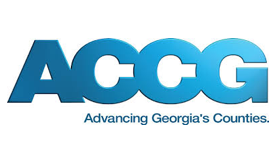By Peter R. OlsonÓ
JENKINS, BOWEN AND WALKER, P.C.
15 South Public Square
Cartersville, Georgia 30120
770/387-1373
Currently a great deal of media and professional attention is being devoted to the issue of development impact fees. A development impact fee is a fee charged to cover a new development's impact on infrastructure. A more precise definition is contained in the statute, and will be discussed below. Development impact fees are governed by O.C.G.A. § 36-71-1 et seq. Those statutes have been on the books for about ten years, and some municipalities have adopted impact fee ordinances. However, developers have been discouraging impact fees, and few if any counties have adopted them. In metro Atlanta, Cherokee County is paving the way with the adoption on May 1, 2000 of a comprehensive impact fee ordinance. Henry County is not far behind with its ordinance. The Greater Atlanta Home Builders Association filed suit immediately challenging the validity of the Cherokee County ordinance under the statute. (Greater Atlanta Home Builders Association, Inc. v. Cherokee County, Georgia, CAFN 00-CV-0768, Cherokee County Superior Court). [The author's firm represents the County in that litigation.] The challenge did not include any direct challenge to the constitutionality of the impact fee statute, but rather a challenge to the County's ordinance and the assertion that it does not meet the requirements of the law.
- Impact Fee law
Some have said that the development impact fee statute was drafted with the assistance of developers in order to make it very difficult to comply with and discourage enactment of such fees. Who can say what moves the General Assembly to act? However, O.C.G.A. § 36-71-1 et seq. is undeniably a complex statute, with numerous requirements for an impact fee ordinance to be valid.
- Capital Improvements Element
Impact fee ordinances are intimately tied to the Capital Improvements Element of a local government's comprehensive plan. O.C.G.A. § 36-71-3 requires a local government adopt a capital improvements element (CIE) prior to adoption of a development impact fee ordinance, so the CIE is a necessary prerequisite. The CIE projects the future needs in the local government relating to "system improvements." The development impact fee statute contains numerous definitions, and CIE is a defined term. "System improvements" is also defined, and it is an important definition, because development impact fees can support system improvements but not project improvements.
The CIE thus becomes a comprehensive planning document that determines current need, sets levels of service and service areas, and projects future needs. It must be approved by the Department of Community Affairs.
- Authorized Expenditures: System Improvements versus Project Improvements
Impact fees may be spent on system improvements but not project improvements. Project improvements are improvements that provide service for a specific project. O.C.G.A. § 36-71-2(14). System improvements are "capital improvements that are public facilities and are designed to provide service to the community at large." O.C.G.A. § 36-71-2(18). "Public facilities" are facilities related to water supply, roads, public safety, libraries, parks, storm-water drainage, and sewer. O.C.G.A. § 36-71-2(16). "Capital improvements" are improvements with a useful like of ten years or more that increase the service capacity of a public facility. O.C.G.A. § 36-71-2(1). As can be seen from this example, the statute is full of terms of art that are defined with reference to further defined terms. It is therefore essential to not assume that the words have an everyday meaning, and the definitions statute (O.C.G.A. § 36-71-2) should always be checked.
- New Improvements Only
Development impact fees can only pay for the impact of new growth. They cannot be used to remedy problems already existing, such as lack of capacity. A development impact fee is defined as "a payment of money imposed upon development as a condition of development approval to pay for a proportionate share of the cost of system improvements needed to serve new growth and development." O.C.G.A. § 36-71-2(8).
- Calculation of Fees
Impact fees cannot exceed a proportionate share of the cost of system improvements. O.C.G.A. § 36-71-4. The must be calculated "based on actual system improvement costs or reasonable estimates of such costs." O.C.G.A. § 36-71-4-(q). They are imposed based on service areas, which are designated in the CIE. The question has been raised in the Greater Atlanta Home Builders' suit as to what is a sufficient number of service areas. The Court raised concerns about equal protection if some parts of the county are farther from the service than others.
The ordinance must allow the option of the developer paying his actually proportionate cost, or a set cost per unit of development. This of course provides for an administration headache. The ordinance must authorize credits to be given for system improvements that are made as a condition of zoning or for other reasons. O.C.G.A. § 36-71-7. The ordinance must also authorize refunds for funds not spent within not spent within six years of the collection date. O.C.G.A. § 36-71-9.
- Refunds: O.C.G.A. § 36-71-9
Refunds must be authorized in the ordinance. A developer is entitled to a refund if funds are not encumbered within six years. If a refund comes due, the local government must provide notice to the developer. Then the developer must send a request for a refund within one year. The government has sixty days to decide if the refund is warranted, and if not granted, the developer can sue.
- Credits: O.C.G.A. § 36-71-7
The ordinance must provide for credits for system improvements required or accepted by a government. Credit is not given for project improvements. If the developer agrees to build a system improvement, such as a road, and the cost exceeds what the development impact fee on that development should be, then the developer is entitled to a refund. Credits are also issued when a building project is abandoned but some system improvements have been built.
- Investment of Fees
The Code provides that the impact fees collected must be kept in an interest bearing account. O.C.G.A. § 36-71-8. Furthermore, records must be kept to show the category for which the fees are collected and the service area for which fees are collected, as well as who paid the fee. Hence, for example, in Cherokee County an impact fee is assessed that contains a public safety element, a park element, a roads element, an administration element, etc. These fees are quite specifically broken down based on the type of use involved and its impact on a certain type of infrastructure. For example, a movie theater imposes a greater burden on roads than a cemetery, and so is charged a correspondingly higher fee for that system improvement. Hence, voluminous and detailed records must be kept to insure compliance with the refund provision. If a road project is begun within six years but no parks built, then the park money may become unencumbered and need to be refunded, whereas the road money would not need to be refunded.
- Previously Incurred Costs
An interesting provision of the Code is that a government may provide for the imposition of impact fees for system improvement costs previously incurred by a government to the extent that new growth or development will be served. In other words, if a county already has a road widening underway, and some portion of that project can be show to support new growth rather than existing traffic, an impact fee can be collected to pay that cost. This raises the interesting question of where the money should go. Essentially, the impact fee would seemingly be used to repay the general fund of the government, or whatever fund had been used. However, this appears to conflict with the provision that requires impact fees only to be used to pay for system improvements that create additional service to serve new growth – they would be, but only indirectly.
- Appeal
The ordinance must provide for an appeal to the governing body or some body of the amount of an impact fee. Arbitration can be authorized.





